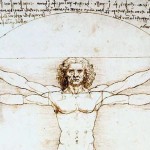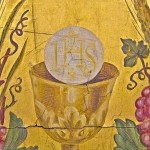
USA Today reports that new testing has pushed the Shroud of Turin back to Christ’s time:
Many experts have stood by a 1988 carbon-14 dating of scraps of the cloth carried out by labs in Oxford, Zurich and Arizona that dated it from 1260 to 1390, which, of course, would rule out its used during the time of Christ.
The new test, by scientists at the University of Padua in northern Italy, used the same fibers from the 1988 tests but disputes the findings. The new examination dates the shroud to between 300 BC and 400 AD, which would put it in the era of Christ.
It determined that the earlier results may have been skewed by contamination from fibers used to repair the cloth when it was damaged by fire in the Middle Ages, the British newspaper reported. The cloth has been kept at the cathedral since 1578.
Actually, the news is from 2013, but you probably still think it’s a medieval fake.
The truth is that there is no known way to reproduce the image. The old article notes that there is also no surefire way to prove it bears the image of Christ, but it could. I love these kinds of mysteries on the borders of the explicable, the sort of stuff you find in books such as Paul Badde’s The True Icon: From the Shroud of Turin to the Veil of Manoppello or even the Pacific Northwest’s own (Greg Kandra would have you believe we’re all irreverent hippies who worship the Seahawks–it’s not like we’ll deify the Mariners) Patricia Treece in her The Mystical Body: A Reflective Investigation of Supernatural and Spiritual Phenomena. All these phenomena frustrate the predicative and calculative understandings of reason, which is not to say that those are the only understandings of reason available to us.
The researcher Giulio Fanti has put a lot of work into overturning the medieval forgery dating:
The latest findings are contained in a new Italian-language book — Il Mistero Della Sindone or The Mystery of the Shroud, by Giulio Fanti, a professor of mechanical and thermal measurement at Padua University, and Saverio Gaeta, a journalist.
Fanti, a Catholic, used infra-red light and spectroscopy – the measurement of radiation intensity through wavelengths — in his test. He said the results are the outcome of 15 years of research.
The Telegraph also reports that a new app, sanctioned by the Catholic church and called “Shroud 2.0,” allows anyone to use a smart phone or tablet to explore the shroud in detail.

The real recent news is that Fanti’s book under the title, The Shroud of Turin: First Century after Christ!, appears to be finally available in English:
The Turin Shroud is the most important and studied relic in the world. Many papers on it have recently appeared in important scientific journals. Scientific studies on the relic until today fail to provide conclusive answers about the identity of the enveloped man and the dynamics regarding the image formation impressed therein. This book not only addresses these issues in a scientific and objective manner but also leads the reader through new search paths. It summarizes the results in a simple manner for the reader to comprehend easily. Many books on the theme have been already published, but none of them contains such a quantity of scientific news and reports. The most important of them is the following: the result of the 1988 radiocarbon dating is statistically wrong and other three new dating methods demonstrate that the Shroud has an age compatible with the epoch in which Jesus Christ lived in Palestine. A numismatic analysis performed on Byzantine gold coins confirms this result. This book is, therefore, very important with respect to the Turin Shroud. It is unique in its genre and a very useful tool for those who want to study the subject deeply.
There you go, that’s the newest news on the authenticity of the Shroud of Turin
I love the physicality of the Christian faith, perhaps because my body has always been a bit weak despite its solid appearance. As Larry Chapp put it: Christianity is the most worldly religion of all.
If you’re not a Puritan prude then you should delve into Leo Steinberg’s probing of Renaissance depictions of Christ’s masculinity.
You might also want to take a look at my recent interview with Duke Professor Thomas Pfau entitled Threatening Naturalism’s Universal Authority.
Finally, if all that doesn’t totally put you off then toss a coin my way via the PayPal donation button on my homepage.












